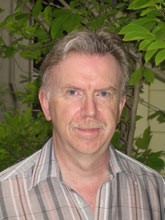

Friday - November 19, 2010
SLAC Today is
available online at:
http://today.slac.stanford.edu
In this issue:
From the Director of Particle Physics and Astrophysics: Future Directions in Non-Accelerator Physics
Your Feedback Wanted on "What's Hot, What's Not" at the Linear Café
Word of the Week: Planck Units
 |
 |
|
Friday - November 19, 2010 |
From the Director of Particle Physics and Astrophysics: Future Directions in Non-Accelerator Physics Defining a field by what it is not might seem like an odd approach. However, as the name implies, the Department of Energy Non-Accelerator Program encompasses the broad array of science pursued with experiments and facilities other than those at accelerators. Many of the most compelling questions in particle physics and cosmology are being addressed at experiments deep underground, on mountain tops and even in space. What is the nature of dark energy? Can we directly detect evidence for primordial dark matter particles from the early universe? Is there evidence for dark matter in the high-energy gamma-ray universe? Is the neutrino its own anti-particle? Can we find evidence for the physics behind inflation? Answering these questions has taken high-energy physics a long way away from the traditional accelerator-based experiments. Over the past decade or more, SLAC has been developing a growing effort in non-accelerator physics, particularly following the creation of the Kavli Institute for Particle Astrophysics and Cosmology in 2002. The foundation of this program is presently the Fermi Gamma-ray Space Telescope, exploring the high-energy gamma-ray universe with exquisite sensitivity. The Enriched Xenon Observatory is in the midst of commissioning the experiment and at the beginning of a planned a five-year search for neutrinoless double beta decay as a probe of the nature of the neutrino. SLAC is engaged with Fermilab and the Super Cryogenic Dark Matter Search Collaboration in planning for the next-generation dark matter experiment. Read more... Your Feedback Wanted on "What's Hot, What's Not" at the Linear CaféThe team at The Linear Café invites you to come to our "What's Hot & What's Not!" session. We are creating new and exciting menus for the coming year, and want your feedback! Come by and meet the Linear Café team on Monday, November 22 at 3 p.m. We will be offering complimentary hors d'oeuvres and beverages. See you there! Word of the Week: Planck UnitsIf God were to measure the mass, length or lifespan of the Universe, which units would he use? The answer, judging by tongue-in-cheek nicknames, might be Planck units. Sometimes called "God's units," these metrics are based on the properties of free space—that is, a perfect vacuum, empty of particles. While the origin of most traditional units of measurement can be traced to uniquely human reference points (for example the average length of a human foot), Planck units are derived from products and ratios of three fundamental quantities (the gravitational constant, G, the reduced Planck's constant, ћ, and the speed of light in a vacuum, c). For time and distance, Planck units characterize events and physical properties on an extremely small scale. The Planck length is 1.62 x 10-35 meters. The Planck time (a mere 5.39 x 10-44 seconds) is the amount of time it takes a photon to travel a distance equal to one Planck length. Planck units are probably far too tiny to be practical in everyday measurements, but are very useful for theoretical physics calculations about the earliest moments of the Universe. It has also been suggested that the fundamentally defined units could come in handy should the human race one day communicate with extraterrestrial beings. |
Events
Access (see all)Announcements
|
|
| | ||
|
|
||
 <%
Response.AddHeader "Last-modified", getArticleDate()
'Response.AddHeader "Last-modified","Mon, 01 Sep 1997 01:03:33 GMT"
'Monday, December 06, 2010
%>
<%
Response.AddHeader "Last-modified", getArticleDate()
'Response.AddHeader "Last-modified","Mon, 01 Sep 1997 01:03:33 GMT"
'Monday, December 06, 2010
%>View online at http://today.slac.stanford.edu/. |
||